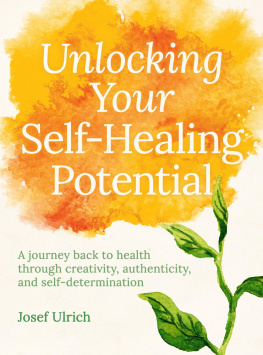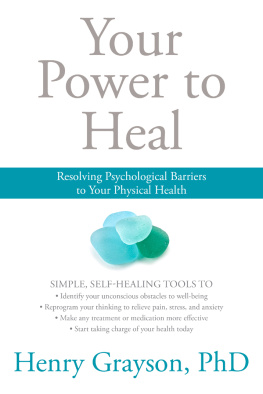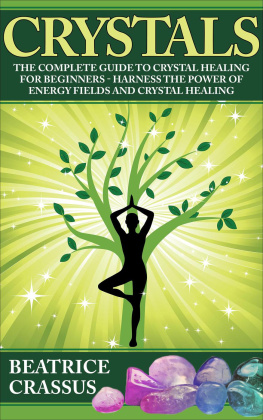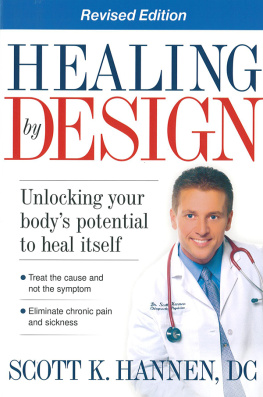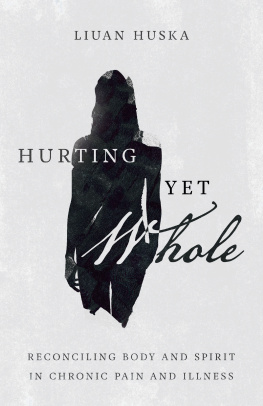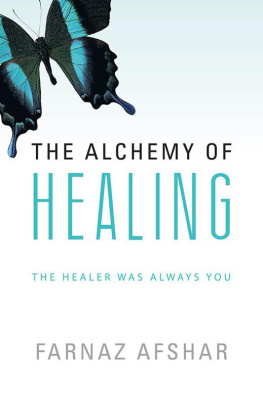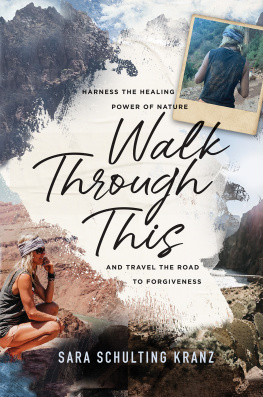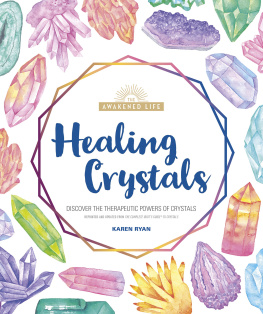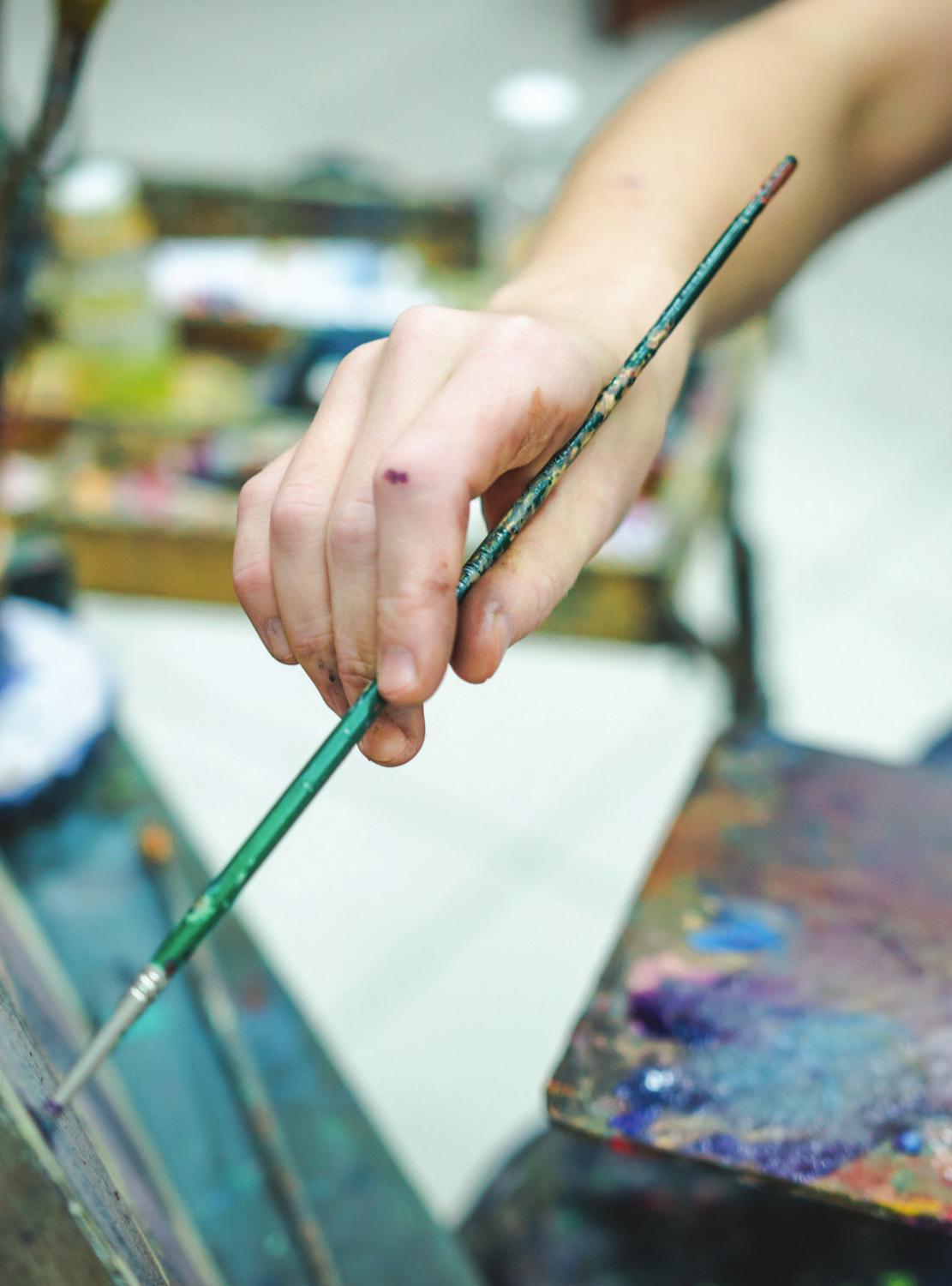The ideas and suggestions in this book are intended for use alongside medical treatment. Readers with health issues should always consult medical professionals. The author and publisher do not accept any liability.
Do we have self-healing capacities? Of course. We all know that a wound or broken bone can heal up by itself. But what about everything else between skin and bone inside each cell of the body? Are self-healing forces at work there too?
Yes indeed. Without these regenerative powers, we would soon die, as all our cells are constantly being damaged in smaller and larger ways. They are damaged and then our bodies repair or replace them.
So how can we best support our healing potential?
Some answers to this feel certain. We know that vital elements of the healing process include our will to live, belief in our capacity to heal and a loving connection with life.
But, you may ask, how can the will kindle the flame of my healing energy? How can I maintain a belief in healing when lifes unfathomable potential is limited to current finite human knowledge? How can love unfold its power in me when I am confronted daily by events that cast great doubt on the good in human beings? We all continually see how greed and lust for power cause natural and human devastation across the world.
Each subjectively oriented human being carries the power to foster processes of healing at every level. I believe we can all find within ourselves a loving presence of mind; perception of the other; true meaning; authentic feelings; valid decisions and the capacity to act upon them. And we can cultivate these qualities throughout our lives. We are not victims but co-creators of the human world around us.
Each of us can start with ourselves. We can begin to live the change we wish to see, and you can live it in your own body, self and life.
When we are threatened by grave illness, the inner artist of our lives can be re-awoken; the inner navigator of our soul, shining at the core of our being, can reassert a luminous power. There are many people who, in illness, find their path and pursue it, often gaining health in the process, even when, from a medical perspective, their situation had seemed irrecoverable.
The ideas contained in this book are based on my conversations with many different patients as they journeyed through life-threatening illness. They shared the discoveries and insights that came to them in times of great personal difficulty. I hope their experiences will help my readers rekindle their own powers of self-healing, and follow where they lead.
Josef Ulrich
I believe that each of us carries inside ourselves a spark of the eternal light, which must shine luminously in the depths of existence, though we can grasp only a faint inkling of it with our weak senses.
I consider it our highest task to kindle this spark into a flame, and to realise our own divine nature.
Malwida von Meysenbug
In my work as an art therapist, I have often met people who have suffered a life-threatening illness that, astonishingly, does not end as predicted. During their illness these people often seem to develop a striking degree of creativity.
Creativity and the immune system
Thirty years ago, these meetings led me to wonder whether there might be a connection between a persons creativity and the strength of their immune system, between their inner being and their bodys life forces. Do processes of the psyche have an affinity with those of the immune system? Was it possible, I wondered, that an authentic and self-determined life could act as a model for the immune system, thus preventing illnesses or supporting their cure? Perhaps authenticity and self-determination could unlock powers of self-regeneration we never even dream of, by directing people back to the originating, intrinsic impulses underlying their lives?
My experience now tells me this is so. I believe people develop special capacities as they engage in stages of the creative process.
Triumph of the human spirit
People in crisis situations report that their mental or spiritual outlook enabled them to survive. Victor Frankl, as we know, found in the concentration camp where he was incarcerated that ultimate freedom resides in our inner stance toward whatever situation we face.
Despite 27 years of imprisonment, Nelson Mandela never succumbed to hatred or the desire for revenge. He used this time to work toward the goal of peaceful co-existence in South Africa. For many years he kept recalling and repeating the poem Invictus by William Ernest Henley,
Another well-known figure is the British physicist and astrophysicist Stephen Hawking, who contracted amyotrophic lateral sclerosis. Despite a body that had been more or less unviable for decades, he developed an extraordinary power of mental activity, which sustained him for decades and gave his vivid, humorous spirit a dwelling.
The patient is the key to healing
Modern medicine, which has proven of inestimable value in many fields, has nevertheless given rise to the idea of patients as passive victims of their illness. Disease is portrayed as giving rise to symptoms that must be medically suppressed or eradicated. Holding these assumptions, it is easy to lose sight of the patient as an active and vital contributor to their cure.
What is creativity?
Some readers, on hearing this talk of creativity, might well think that it is not one of their gifts. Many patients come to my art therapy sessions convinced they cannot paint. But in fact, this bears no relation to lifes reality. As so often, a fixed idea about ourselves intrudes and paralyses possibilities. The potential for creativity in every single person means simply that anyone can shape and configure their world. As Albert Steffen puts it:
To be an artist in this sense is possible for all people in every walk of life as long as they themselves grasp the transformative initiative. This does not have to be by using material substance formed into an artwork, or words, or music, or colour. It can also be a friendship, a work relationship, an illness, a misfortune or a blow of fate. Nothing is beyond reach of the artistic impulse, oneself least of all. Accordingly, being an artist means becoming fully human in the truest sense.
Creative forces do not have to be expressed on paper. What I do with my patients could be called art therapy in the mind. In our minds we paint our thoughts, concerns and anxieties, as well as our intimations of joy, our confidence and trust. By so doing we are co-creators of the reality we experience. Our thoughts have a decisive effect on how our life develops, and often also on the course of an illness.
A patient is more than an illness
Health and illness are both always present inside us. Over the last thirty years I have been privileged to meet thousands of patients, and while many of them, in the view of medicine, had the same condition, the same diagnosis, each and every one of them had their own particular path and journey. I met people whom doctors believed should no longer be alive, let alone able to recover, while others suddenly and unexpectedly died. And there were people who died happily and with gratitude in their hearts, whereas for others it seemed very difficult to let go and find peace. I can assure you that each of them was more than their illness: each one was, and is, a human being.

